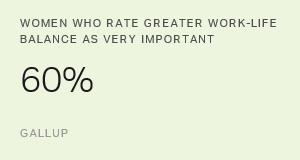Call centers are about managing people, and the centers with the best work force and the best management of that work force produce the best results.
This is the fundamental lesson we have learned through years of experience at The Gallup Organization, running our own call centers and helping clients run theirs. It's a simple idea, and yet it runs counter to the management philosophy that currently dominates the call center industry. Current thinking views centers as technological wonders, with systems so efficient that anyone can plug into the system and achieve reasonable results as an agent with minimal training or talent.
Gallup's experience suggests this couldn't be further from the truth. Gallup has found that the best centers -- ones with outstanding productivity and superior financial results -- turn this assumption on its head. These call centers, instead, start by hiring the most talented agents, and providing them with training, technology and systems to support their agents' drive for success.
One of the most compelling examples is Gallup's own call center work force of 1,000 full time and 1,000 part time seats in 14 centers around the world. Gallup continually benchmarks the performance of its centers against other centers in the market research industry. Those evaluations not only look at objective performance numbers but also involve a detailed examination of the management methods used by top centers. The results reveal that Gallup, on average, operates at 158% of the efficiency of the next best centers in the industry. That gap is due almost totally to the performance of its workforce, not technology, process, procedures, or policy.
A close examination of the source of Gallup's performance points at two factors: a talented work force, and a management scheme that supports brilliant agent performance. If either of those two factors is mishandled, then work force performance degrades quickly to a lowest common denominator (LCD) level. Many centers Gallup has studied function at that level, and our research shows that it is an expensive and frustrating proposition for those centers.
One of the attitudes commonly found in underperforming centers is the belief that issues outside of the technology system are beyond the center's control. Managers readily identified these issues in a 1998 study of Call Center Managers conducted by Gallup. The issues identified by the 285 call center managers were:
- personnel: 42%
- customer treatment: 29%
- technology: 20 %
- financial: 9 %
Though managers may not have thought about their center's performance in these terms, personnel issues are root cause of LCD. Yet there is an overriding sense in the industry that personnel challenges are the most difficult for management to impact. Personnel issues can't be fixed by adjusting technical parameters, so managers are frequently frustrated in their efforts to deal with them. To understand, why it is helpful to look at the breakdown of personnel issues as described by the managers we surveyed. Personnel issues included agent recruitment and hiring, retention, training, quality, and pay.
It's easy to see how a manager might peg some or all of these issues as beyond their control. After all, tight labor markets exist everywhere; training budgets are low in a cost-competitive industry; not many people seek a job as demanding as a call center agent's; and, when good agents are found, their talents are highly portable and they can always leave if offered higher pay. These are formidable concerns, and Gallup research confirms that the management philosophies and systems currently used in most call centers are incapable of managing agent performance in the face of these challenges.
Gallup's Houston call center provides a prime example of how "conventional wisdom" results in LCD performance levels and their associated costs. When Gallup purchased the center in 1990, there were 105 interviewers executing 12,400 projects a year. That performance lead to a per person productivity rating of 118 for the center. (At Gallup, per person productivity is calculated by comparing the number of deadlines met by the center to a target number set by center management. A per person productivity rating of 118 is 18% above target.) Interviewer retention at the center was 14%, and average pay for interviewers was $4.25 per hour. These factors resulted in a cost of $3.88 per completed interview -- typical performance for the market research industry.
Six months after its purchase, the center's transition to Gallup workforce management practices was complete, and the center was functioning at a level that continues today. The center now has 64 interviewers who execute 18,200 projects annually, with a per person productivity rating of 285. Interviewer retention is an industry-leading 83%, and average pay is $7.25 per hour, but -- most importantly -- the cost per completed interview has dropped to $2.25.
This is the promise of increased agent performance: fewer people, doing more work and earning more money, while decreasing the cost of completed work. In short -- a dramatically more productive workforce. The benefits are huge, for both employees and the organization. The challenge is implementing a management system that can consistently provide them.
Other articles in this series will focus on the key management systems that Gallup has determined drive agent and center performance to maximum levels, and keep it there:
- agent career advancement
- pay for performance
- agent recruitment
- agent retention
- agent training and coaching
- the call center manager's role
These systems are interdependent, and it is impossible to combat LCD performance levels by concentrating management efforts in only one of the areas, and ignoring or neglecting the others. Upcoming articles will share the success stories of call centers that have achieved outstanding results by turning "conventional wisdom" inside out -- call centers that start by focusing on agent performance, and integrating the management systems needed to support agent success.
